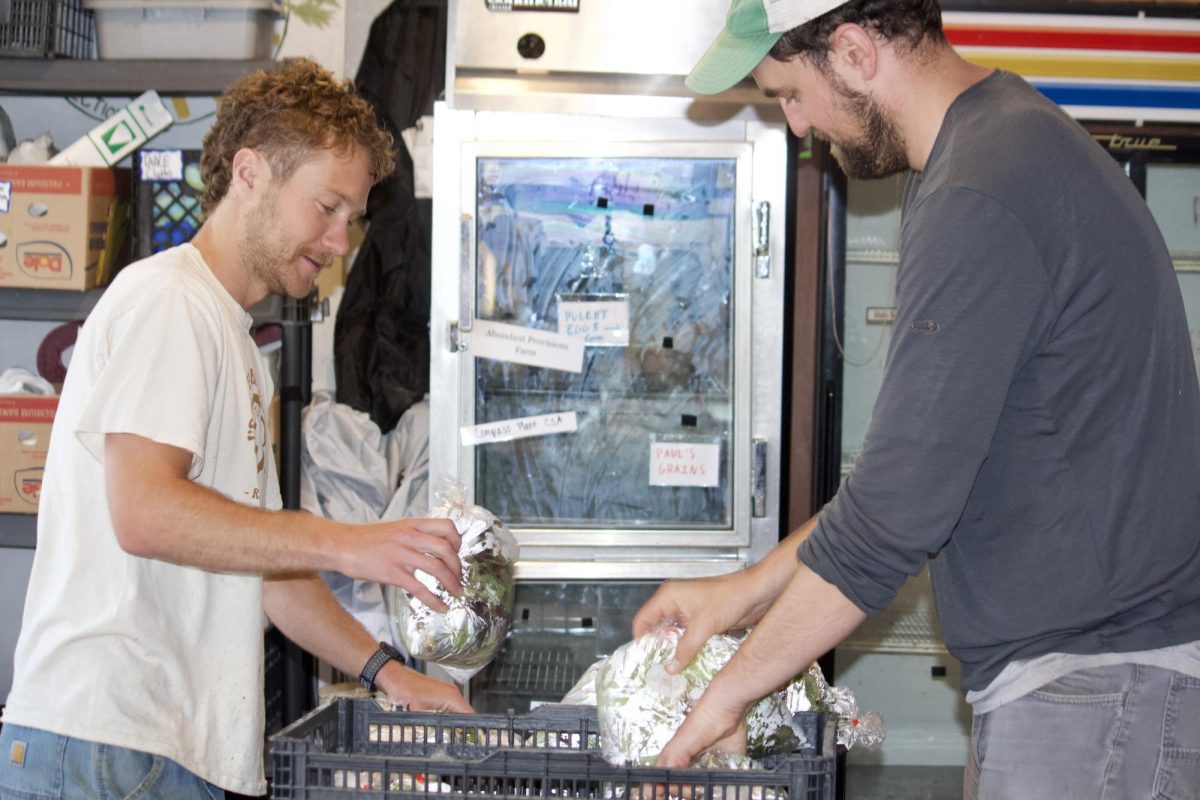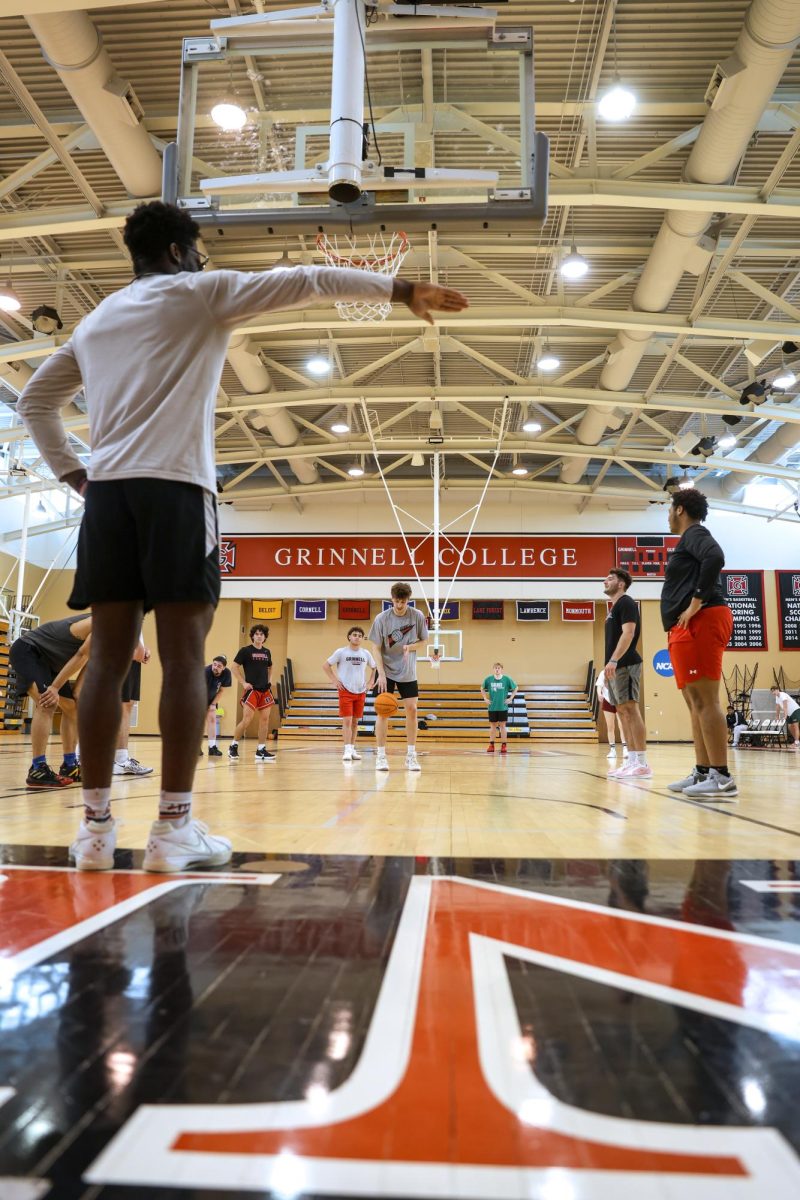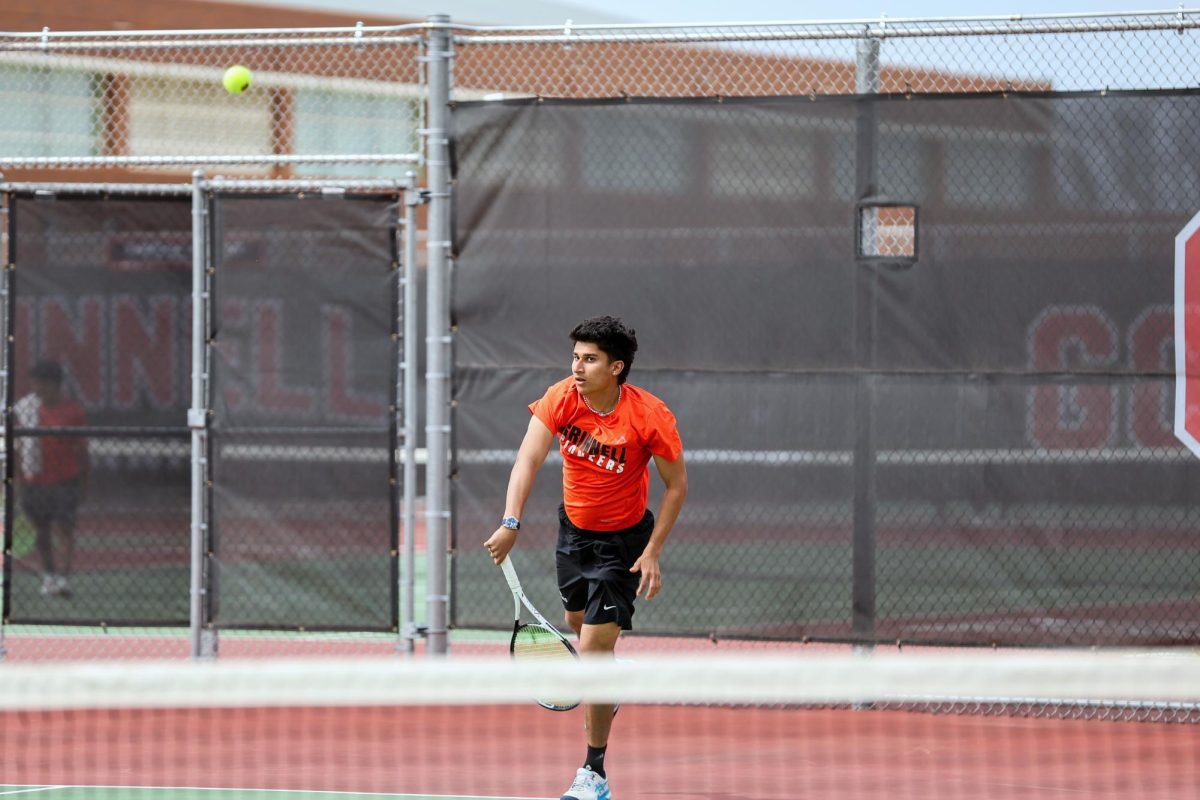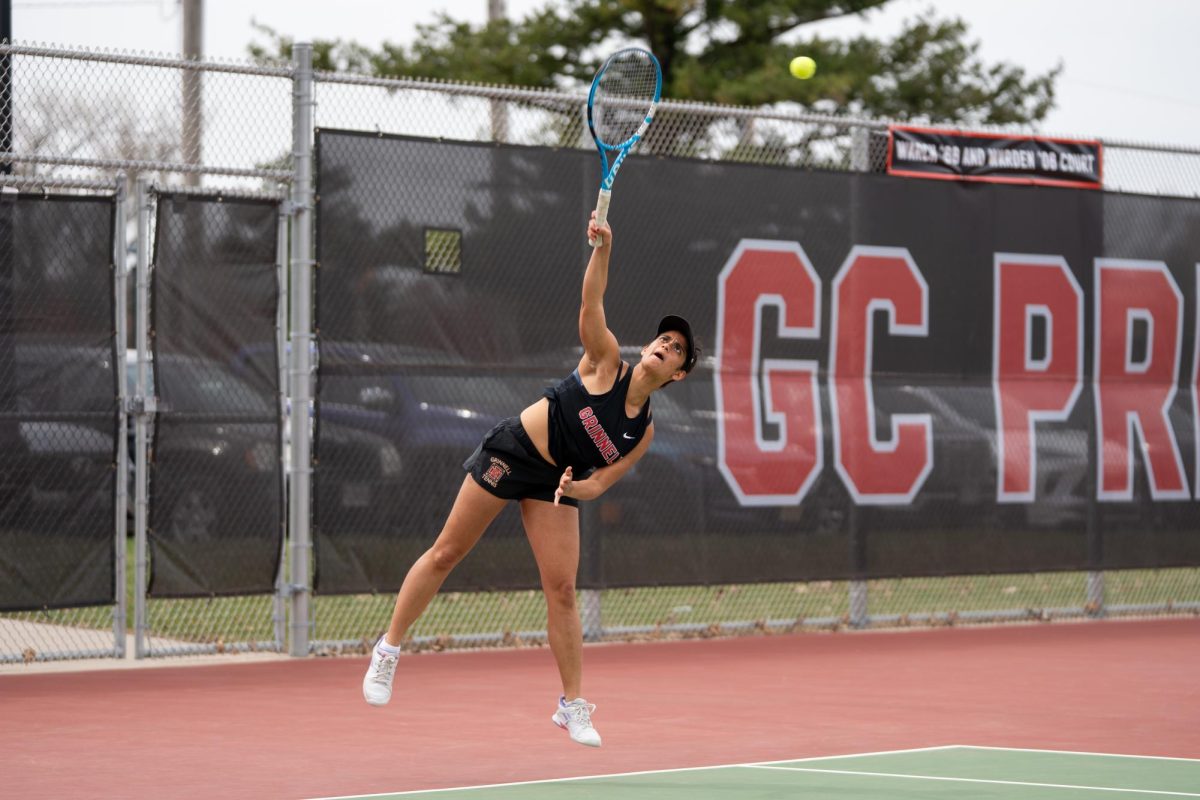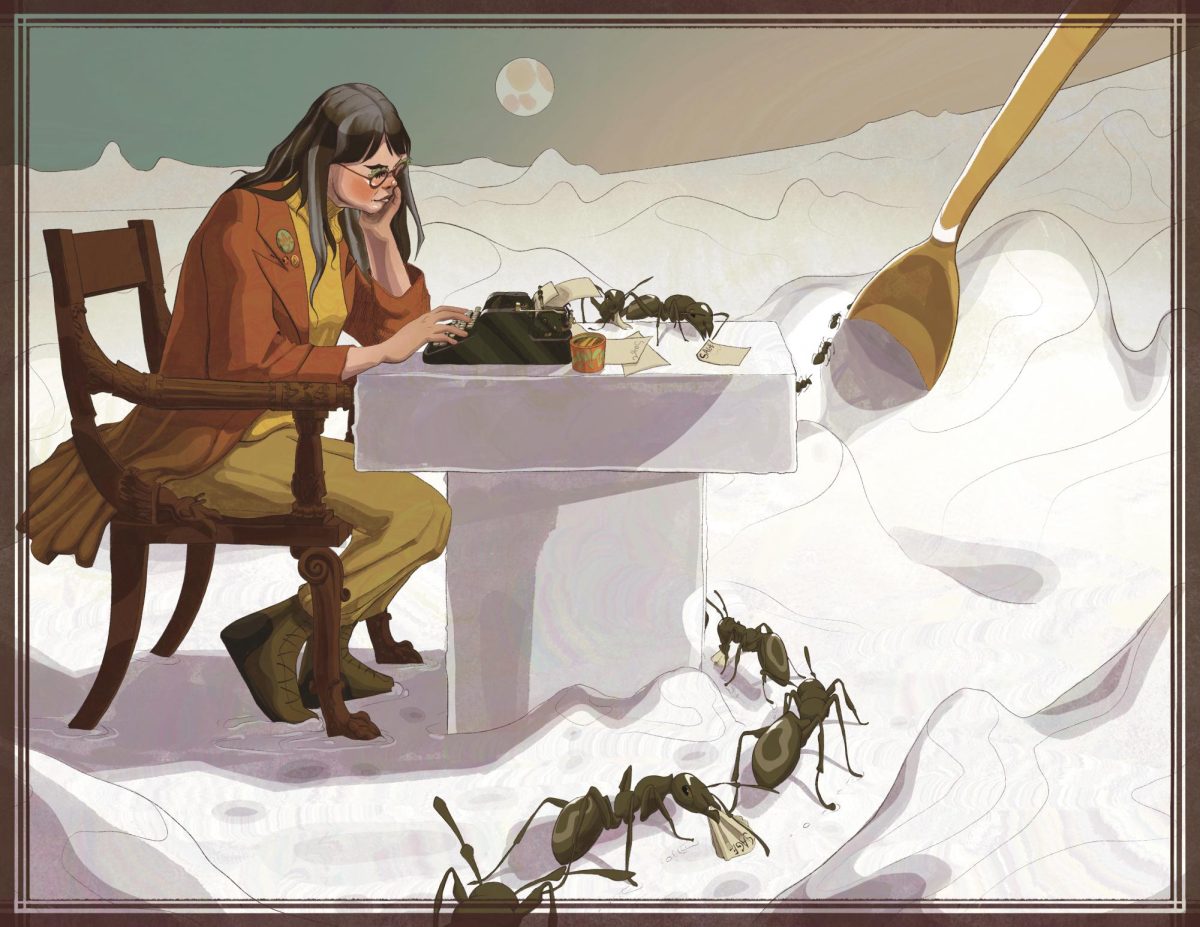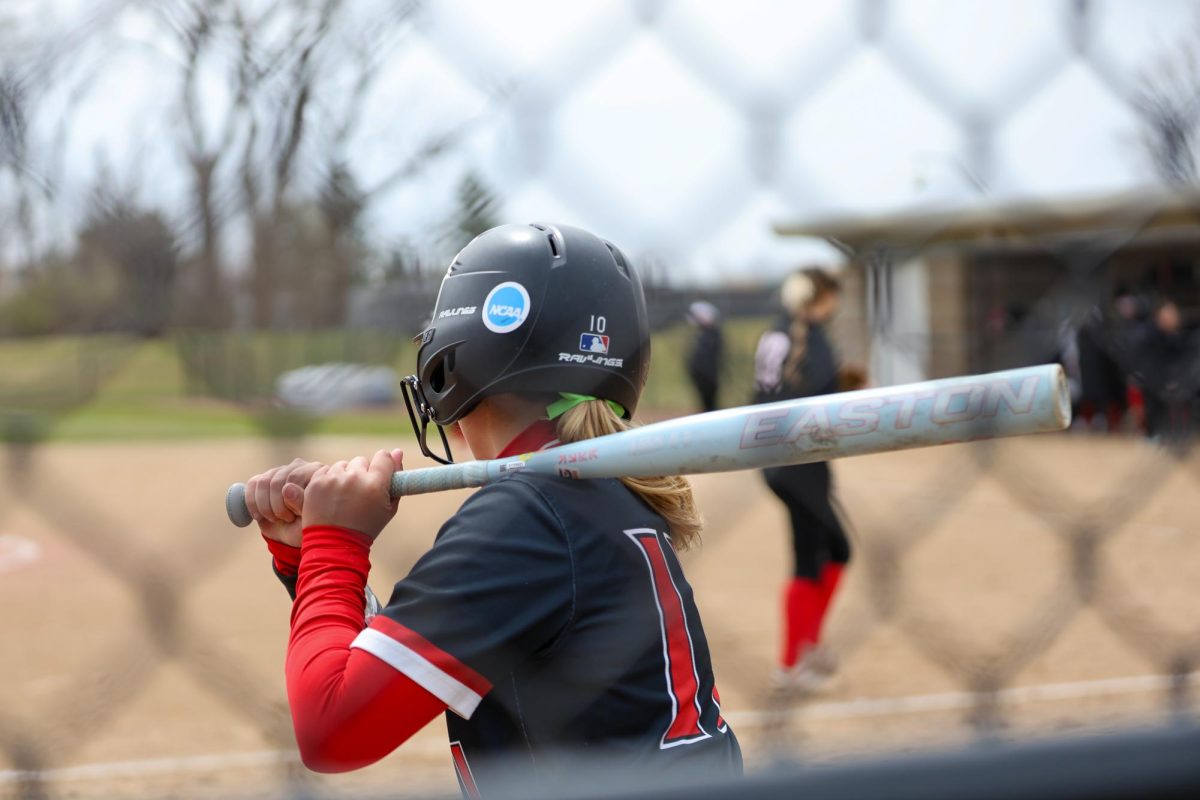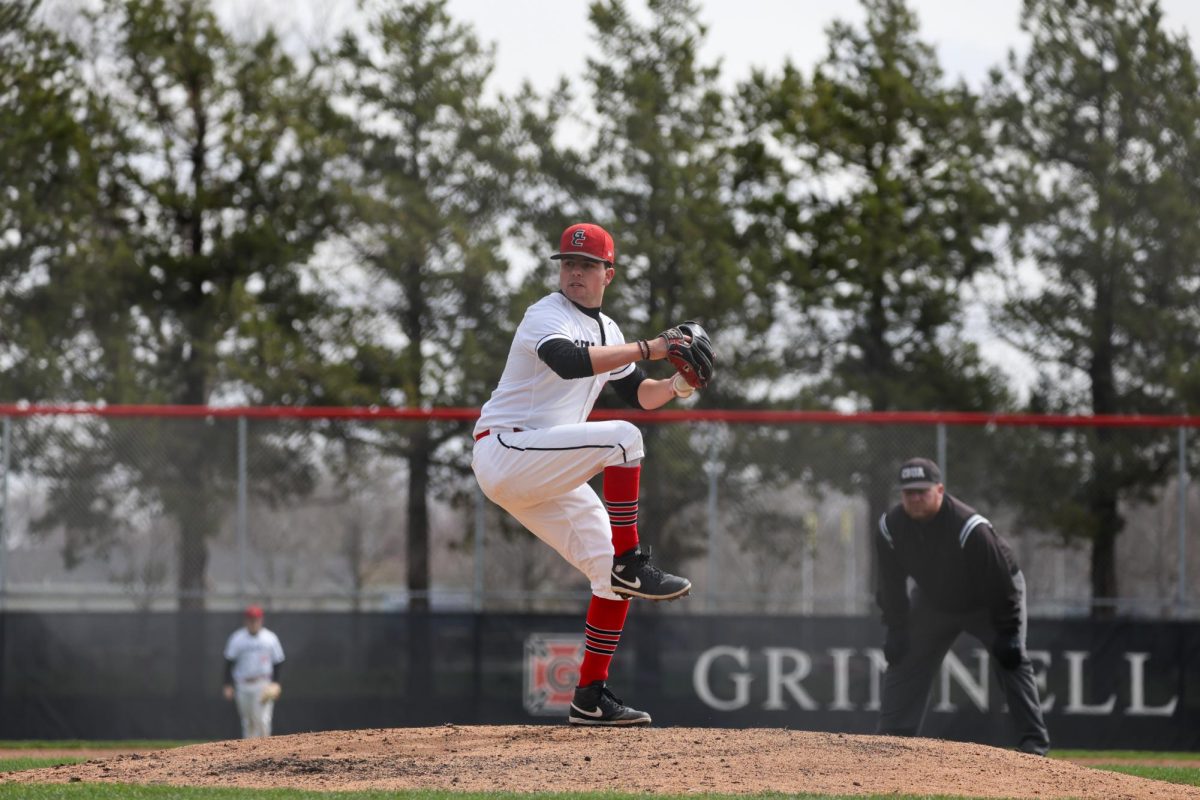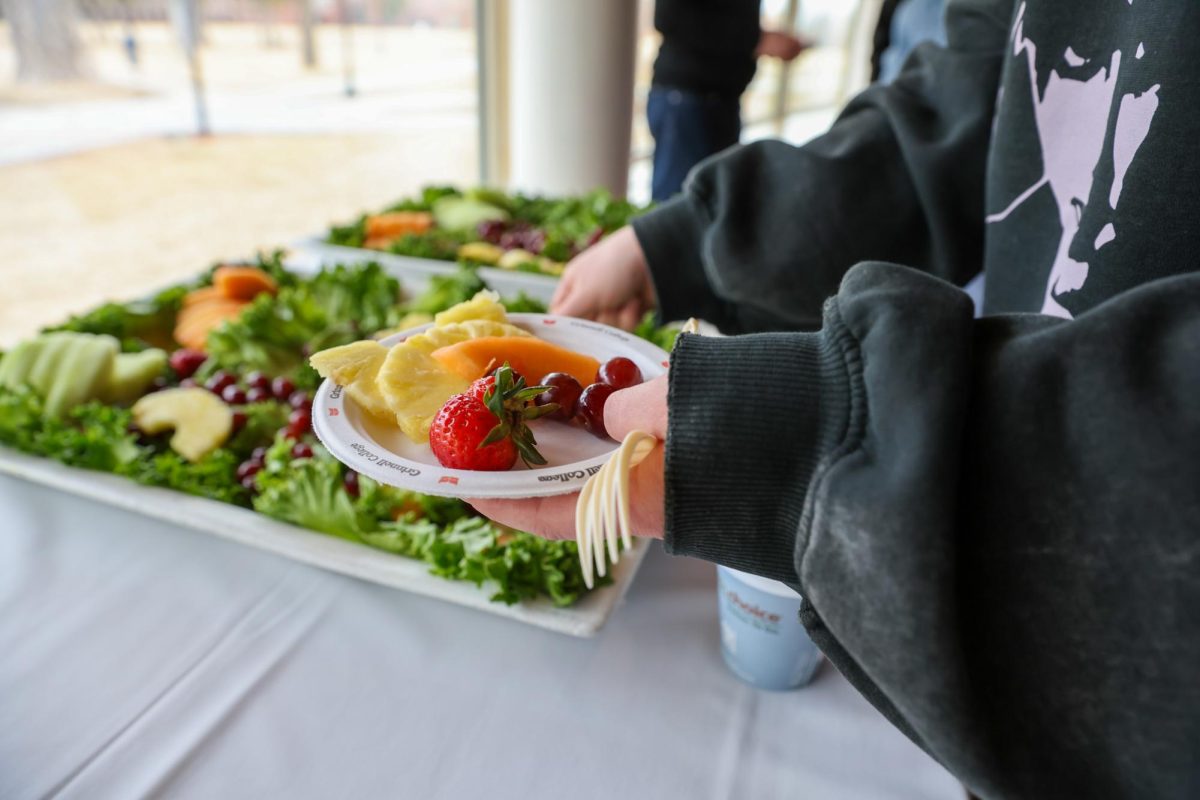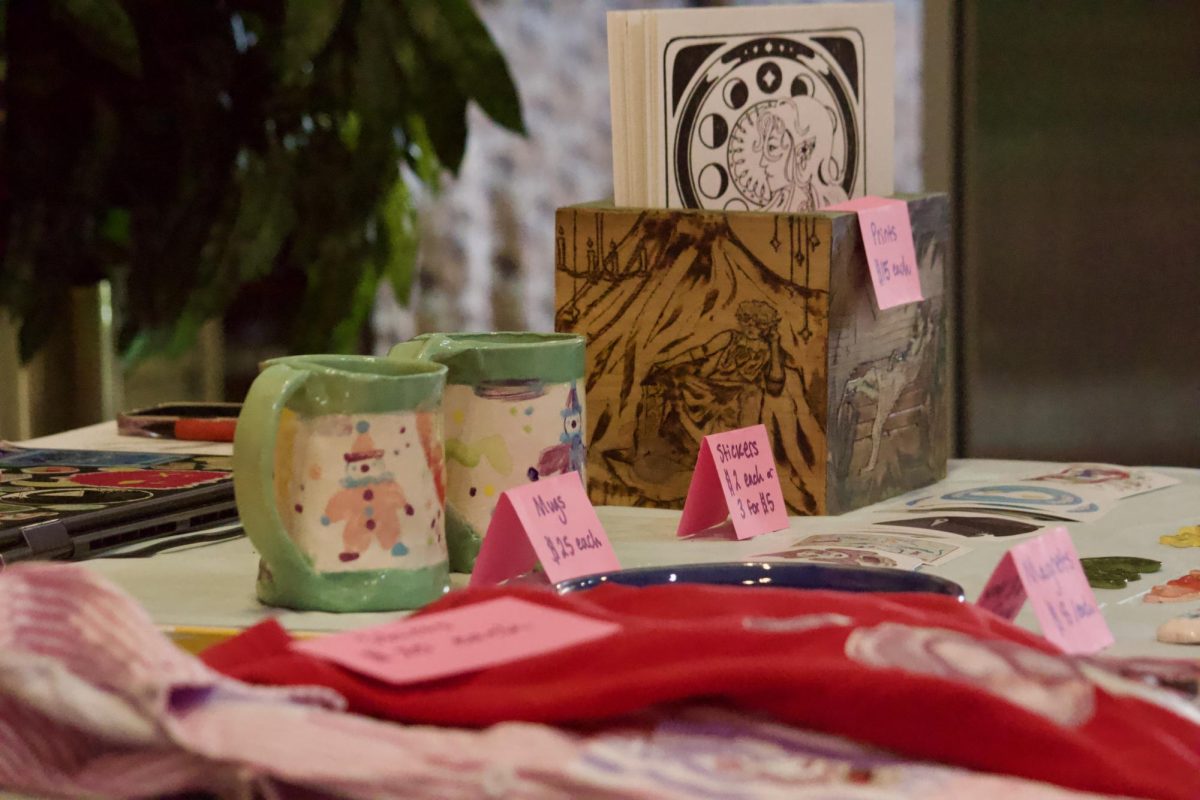Julia Schafer
schaferj@grinnell.edu
Grinnell College is known as the tiny liberal arts college in the middle of cornfields. It’s part of the charm of Grinnell; you might even say it grows on you. But underneath the expanses of agricultural productivity lies a very real problem for Iowa’s water bodies: subsurface drainage, otherwise known as tile drainage, which has been essential for Iowa’s agricultural productivity but increases the delivery of harmful nitrogen to Iowa’s water bodies, creating harmful consequences for the health of Iowa’s water.
Keegan Kult, an environmental scientist with the Iowa Soybean Association, gave a talk on Monday, March 7, at 7:30 p.m. in the Drake Community Library about different technologies that are being developed to reduce the nitrogen load coming from the drainage of agricultural fields in the Midwest.
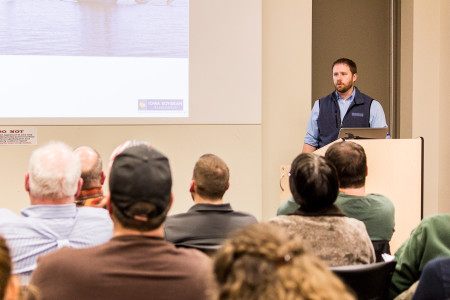
The event was organized by Mindy Sieck, Watershed Coordinator for the Poweshiek Soil and Water Conservation District. Sieck spoke briefly about the importance of the implementation of conservation drainage practices, especially for Iowa’s many impaired waterways.
Tile drainage is widely considered to be an effective practice: it reduces surface runoff and the risk of excessive water stress, increasing infiltration and reducing soil compaction. But as Kult pointed out, there are still issues with nutrient retention.
“Now we’re starting to discover some side effects of tile drainage and one of those big issues being the impacts on dissolved nutrients like nitrogen,” Kult said. “We’re looking at ways of increasing their environmental performance.”
A lot of public utilities get drinking water from Iowa’s stream, surface or shallow wells. However, recently Iowa water has contained greater than the maximum acceptable nitrogen level of 10 parts per million. In 2008, the Hypoxia Action Plan, largely in response to the Dead Zone in the Gulf of Mexico, required states to create nutrient reduction plans. Iowa was the first to do so.
The Iowa Soybean Association has been working on these problems. Over the last year they sampled over 250 tiles around Iowa to understand the scope of these issues and the need for conservation.
“We had some very high [nitrogen levels],” Kult said. But this means that there are great locations for these conservation drainage practices to be implemented.
Kult focused heavily on two types of practices recommended by the Iowa Nutrient Reduction strategy: bioreactors and saturated buffers.
Kult says the common practice of using cover crops will create “a lot of benefits,” but he added that we’re still missing out on reducing a lot of nitrogen. Bioreactors and saturated buffers have the potential to significantly reduce the nitrate levels in the water before it reaches creeks and streams.
Denitrifying bioreactors redirect a portion of tile flow through an underground pit of woodchips to remove nitrates from water. They are typically located at the edge of the field near the tile outlets into the stream and can only be used to drain large areas of 30 to 100 acres. Bioreactors can be expensive to install, sometimes ringing up at 12,000 dollars.
Saturated buffers also intercept tile drainage prior to discharging to surface waters via a structure that redirects water and redistributes the water into the soil of the streamside buffer. This increases the shallow groundwater level and naturally reduces nitrogen levels.
“[Saturated buffers are] pretty simple when you get them out there,” Kult said, and cost around 4,000 dollars to install. The Iowa Soybean Association’s data indicates that these technologies have been extremely successful in nutrient reduction.
“I’m glad I’ve gotten to spend quite a bit of time working with these conservation drainage practices and I think they show a lot of potential to help us get where we want to get in Agriculture in terms of environmental performance,” Kult said.
Anyone interested in water monitoring and water quality issues on campus and in the local community can contact the student group Iowater at iowater@grinnell.edu and get involved.








